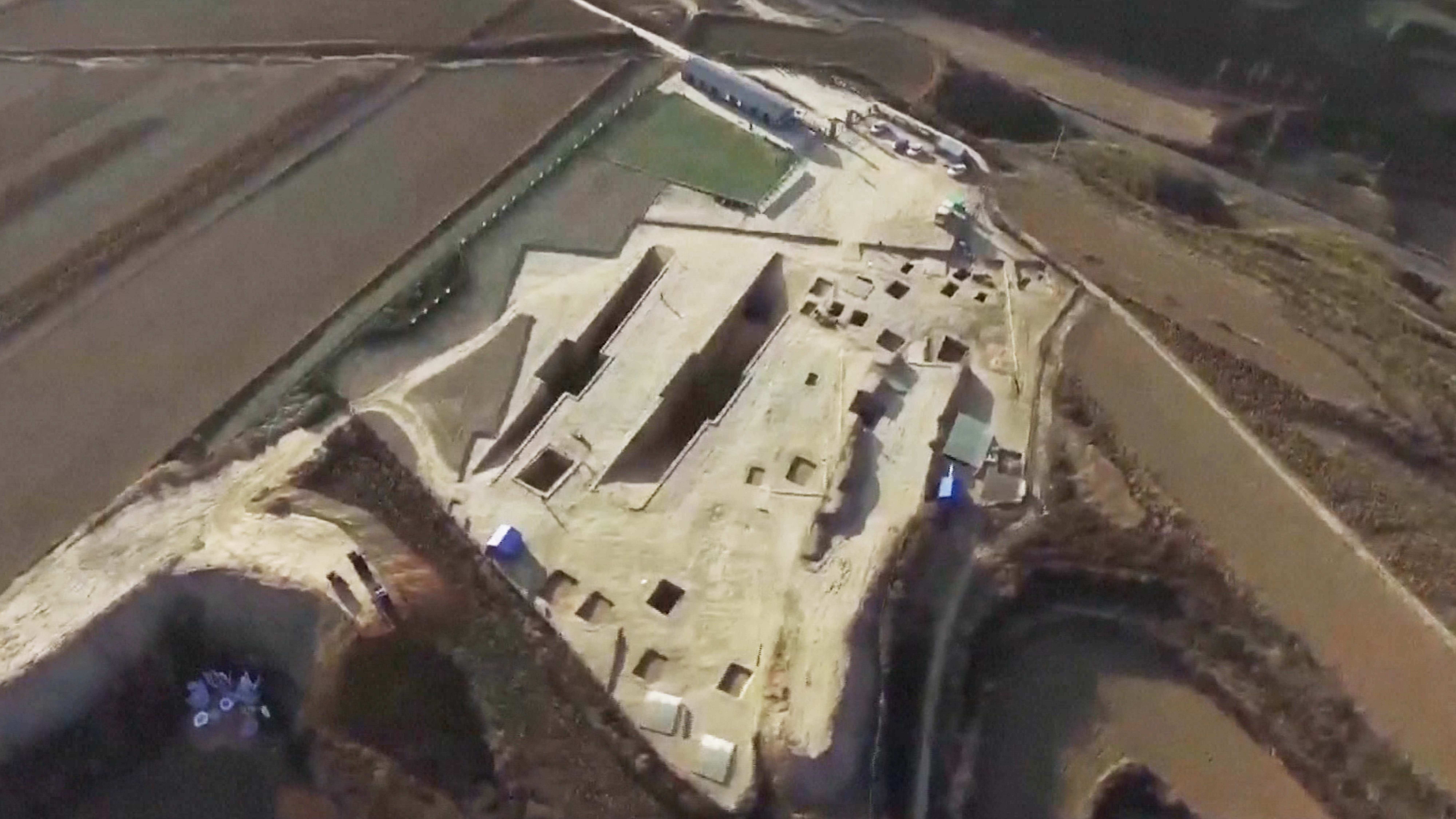
Culture
18:53, 05-Jan-2019
City ruins in NW China confirmed to be 3,000 years old
Updated
18:06, 08-Jan-2019
CGTN
01:12

Chinese archaeologists have confirmed that the ruins of an ancient city in northwest China date back to around 3,000 years ago, filling a page in archaeological history.
Covering an area of three square kilometers, the rubble was located in Liujiawa Village, Chengcheng County of Shaanxi Province.
It includes a 100,000-square-meter residential district where people with high social status are believed to have lived, common residential areas, four cemeteries and more than 210 tombs.
The excavation started in 2016.
Inside one tomb, researchers found "Lord of Rui" inscribed on a copper cover of a Jian drum post and "Rui Xingren (an official title)" on a copper dagger-axe, which led them to believe that they belong to a lord of the Rui State during the early Spring and Autumn Period (770-476 BC).
In another grand tomb estimated to belong to the wife of "Lord of Rui," there are two bronze tripods with inscriptions of "Lord of Rui" and niches holding nine young women that were buried alive.
Among other burial objects are two cooking vessels, named ge, with "Crown Prince Bai" etched on their rim, and musical instruments such as chimes, stone chimes, and a Jian drum.
The Rui State existed during the Zhou Dynasty (1046-256 BC) and the Spring and Autumn period, with little historical records of it left to this day.
A 2005 discovery of Rui State ruins in Liangdai Village, also in Shaanxi Province, launched the research in the mysterious ancient state.
The new discovery provides more evidence for research on vassal states like Rui in terms of political influence, population floating trends, management patterns and cultural exchanges with others.

SITEMAP
Copyright © 2018 CGTN. Beijing ICP prepared NO.16065310-3
Copyright © 2018 CGTN. Beijing ICP prepared NO.16065310-3